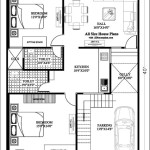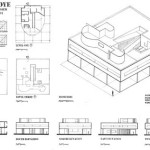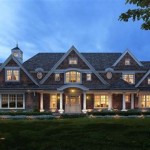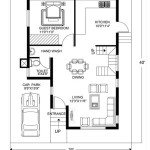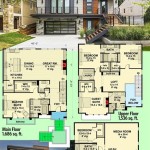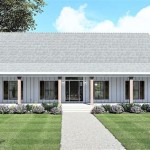Modern Passive Solar Floor Plans: A Comprehensive Guide
In today's environmentally conscious world, passive solar floor plans are gaining popularity as a way to reduce energy consumption and create more sustainable homes. These floor plans are designed to take advantage of the sun's energy to heat and cool the home, reducing the need for traditional heating and cooling systems.
Benefits of Modern Passive Solar Floor Plans
- Energy Savings: Passive solar floor plans can help reduce energy consumption by up to 50%, leading to lower utility bills.
- Increased Comfort: Passive solar homes are more comfortable to live in, as the sun's energy helps maintain a more consistent temperature throughout the home.
- Reduced Carbon Footprint: By reducing energy consumption, passive solar homes help reduce greenhouse gas emissions, contributing to a cleaner environment.
- Increased Property Value: Passive solar homes are often seen as more desirable by potential buyers, leading to increased property value.
Elements of a Modern Passive Solar Floor Plan
- Orientation: The home's orientation is critical in a passive solar floor plan. The main living areas should be positioned to face south, allowing for maximum exposure to the sun's energy.
- Windows and Glazing: Windows and glazing play a crucial role in passive solar homes. Large windows on the south side allow sunlight to enter the home, while overhangs or shading devices help block out unwanted heat during the summer months.
- Thermal Mass: Thermal mass materials, such as concrete or stone, absorb and store the sun's heat, releasing it gradually throughout the day and night, helping to maintain a comfortable temperature.
- Insulation: Proper insulation is essential to minimize heat loss in a passive solar home. This includes insulating the walls, roof, and foundation.
- Airtightness: Airtight construction helps prevent drafts and air leaks, reducing heat loss and improving energy efficiency.
Popular Modern Passive Solar Floor Plans
There are several popular modern passive solar floor plans to choose from. Some of the most common include:
- Single-Story Floor Plan: This is a simple and efficient floor plan that is easy to construct. The main living areas are typically located on the south side of the home, with bedrooms on the north side.
- Two-Story Floor Plan: This floor plan offers more space and flexibility. The main living areas are typically located on the first floor, with bedrooms on the second floor. The second floor can also be designed to take advantage of passive solar heating and cooling.
- U-Shaped Floor Plan: This floor plan wraps around a central courtyard, providing privacy and protection from the elements. The U-shape allows for maximum exposure to the sun, while the courtyard can be used for outdoor living space.
Conclusion
Modern passive solar floor plans offer a sustainable and energy-efficient way to build a home. By taking advantage of the sun's energy, these homes can reduce energy consumption, increase comfort, and reduce carbon emissions. If you are considering building a new home, a modern passive solar floor plan is definitely worth considering.

Passive Solar Home In Stoneville Western Coveney Browne Architects

Deltec Homes Renew Collection Ridgeline B 1604sf Passive Solar Layout Vaulted Ceilings High Clere House Plans Prefabricated Houses Dream

Great Floor Plan For Solar Passive Home In Google Search House Plans Narrow

Contemporary Style House Plan 3 Beds 2 Baths 3238 Sq Ft 72 758 Passive Solar Plans Homes

Passive Solar House Plan 2 Bedrms Baths 1418 Sq Ft 146 2710

Sonoma Passive House Retrofit Floor Plan Design Plans Modern

Modern Style House Plan 3 Beds 2 Baths 2115 Sq Ft 497 31 Houseplans Com

Modern Prefabricated Homes Net Zero Ridgeline Deltec House Floor Plans Small Design Prefab

Sunlight Used Right Modern Home Designs That Harness Solar Power

2 Combined Active And Passive Solar House Design Source Own Elaboration Scientific Diagram

